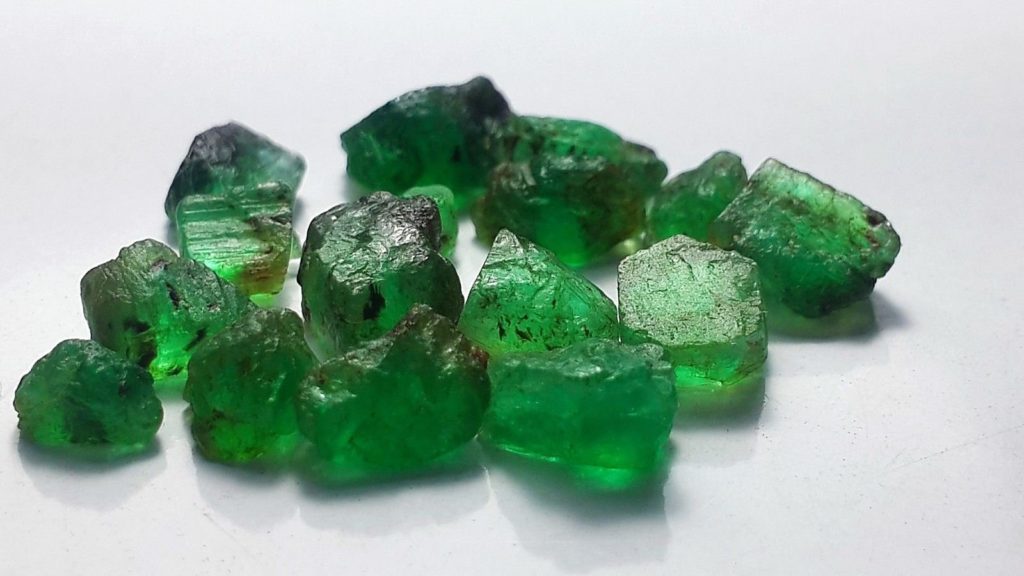
When buying a diamond, many people focus on the shape. But when buying an emerald, it’s often one of the last considerations. When buyers find a brilliant, 1 carat emerald with a lustrous medium-green color, they tend to accept whatever its shape is.
The following terms are used to describe the shapes and cutting styles of emeralds and other fine gemstones:
- Facets – The flat, polished surfaces of a stone.
- Table – The large, flat facet on top.
- Girdle – The narrow rim around the emerald.
- Crown – The top part of the stone above the girdle.
- Pavilion – The bottom part of the stone below the girdle.
- Culet – The small facet on the pointed bottom of the pavilion.

Emerald cut – Usually emeralds are cut in square or rectangular shapes with clipped corners and four-sided facets. This is known as the emerald cut. The clear design of the rectangular or square cut with its bevelled edges emphasizes the beauty of the emerald perfectly. At the same time the cut protects the emerald from mechanical strain.
However, it’s important to remember that each rough emerald is completely unique, with a specific character and physical make-up. So it is important to select the best cut for a particular stone.
Some of the world’s finest emeralds are currently being mined in the Panjshir valley of Afghanistan. These emeralds are of such high quality that they can often be cut into other shapes that inferior stones could never be used for.
Other common cuts for emeralds include:
- Brilliant cut – Features triangular, kite, or lozenge-shaped facets which radiate outward around the stone.
- Mixed cut
- Mixed cut – Has both step and brilliant cut facets.
- Bead cut – Has a ball-shaped form with a hole through the centre.
Cabochon cut – Has a dome-shaped top and either a flat or rounded bottom. Cabochons in years gone by have cost less to cut than faceted styles and are often made from lower quality rough emerald that is unsuitable for faceting, but these days a nice quality emerald cut with a cabochon cut can bring a good price.
When it comes to price, the shape of faceted emeralds is often more significant than the actual faceting style. For example, good-quality round emeralds in a 1 carat size usually sell for a premium. This is because emeralds in this shape and size are rare.


